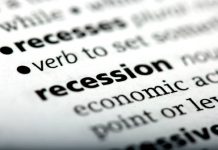Bank of Canada Governor Stephen Poloz spoke in Victoria today. His remarks focused on how the Bank of Canada communicates its thinking to market participants and the public more broadly.
Regarding Canadians at large, Bank research suggests that more can be done to improve the readability and interpretation of the Bank’s work. The Bank will be making changes to help its message reach a broader audience, including a new publication “The Economy Plain and Simple”. Governor Poloz also discussed the importance of two-way conversation, notably in the context of the Business Outlook Survey.
When it comes to market signals, Mr. Poloz expressed comfort in the current process, noting that explicit forward guidance is best used in crisis situations (such as 2009 and not currently), as it can lull markets into a sense of complacency otherwise, unnecessarily constraining the Bank’s actions.
Of particular note, the Governor referred to the new approach of starting from a blank page for policy decisions, using the previous statement (in May) as an example. He noted that the change to ‘gradual’ in characterizing the approach to rates represented increased confidence that the economy was meeting expectations, and that financial markets understood the message. Continuing in this vein during the press conference, recent market pricing (which sees a July hike as a coin flip) was characterized as a reasonable reflection of recent data.
The speech was wrapped with a reminder that economic models only provide a starting point for rate decisions. Uncertainty also plays a role, notably in terms of trade policy uncertainty and housing market developments. This uncertainty and resulting data dependence underscores Poloz’s view that forward guidance in the current context would put the Bank’s credibility at risk.
Key Implications
With the Bank of Canada’s next interest rate decision less than two weeks away, this was a closely watched speech. As it turned out, Governor Poloz was a bit on the cagey side. Coming on the heels of generally disappointing April data, the focus on data dependence and references to the impact of trade policies and housing developments are clearly dovish signals. At the same time, the statement that “Financial markets understood our message” is in reference to a statement that drove market odds of a July rate hike from 60% to 80% in a single day.
That current risks around trade and housing/debt will factor into the Bank’s decision-making is a given. Developments since Deputy Governor Lane’s speech (which fell on the same day as the announcement of U.S. steel and aluminum tariffs, and after the hawkish May statement) have certainly been less than encouraging.
All told, today’s statements reduces our conviction in a July rate hike. Monetary policy isn’t set in response to monthly noise, but uncertainty is undoubtedly elevated which will be taken into account in the rate decision (see Poloz’s discussion paper from shortly after his appointment). The broader economic outlook may be developing in line with the Bank’s expectations, but this uncertainty will temper the implications.
So, it is back to data dependency. Friday’s GDP report and Business Outlook Survey will be key to watch, as will the May credit data early next week. In light of today’s remarks, the burden of proof, and thus the likelihood of a July move hinges on seeing upside surprises.












